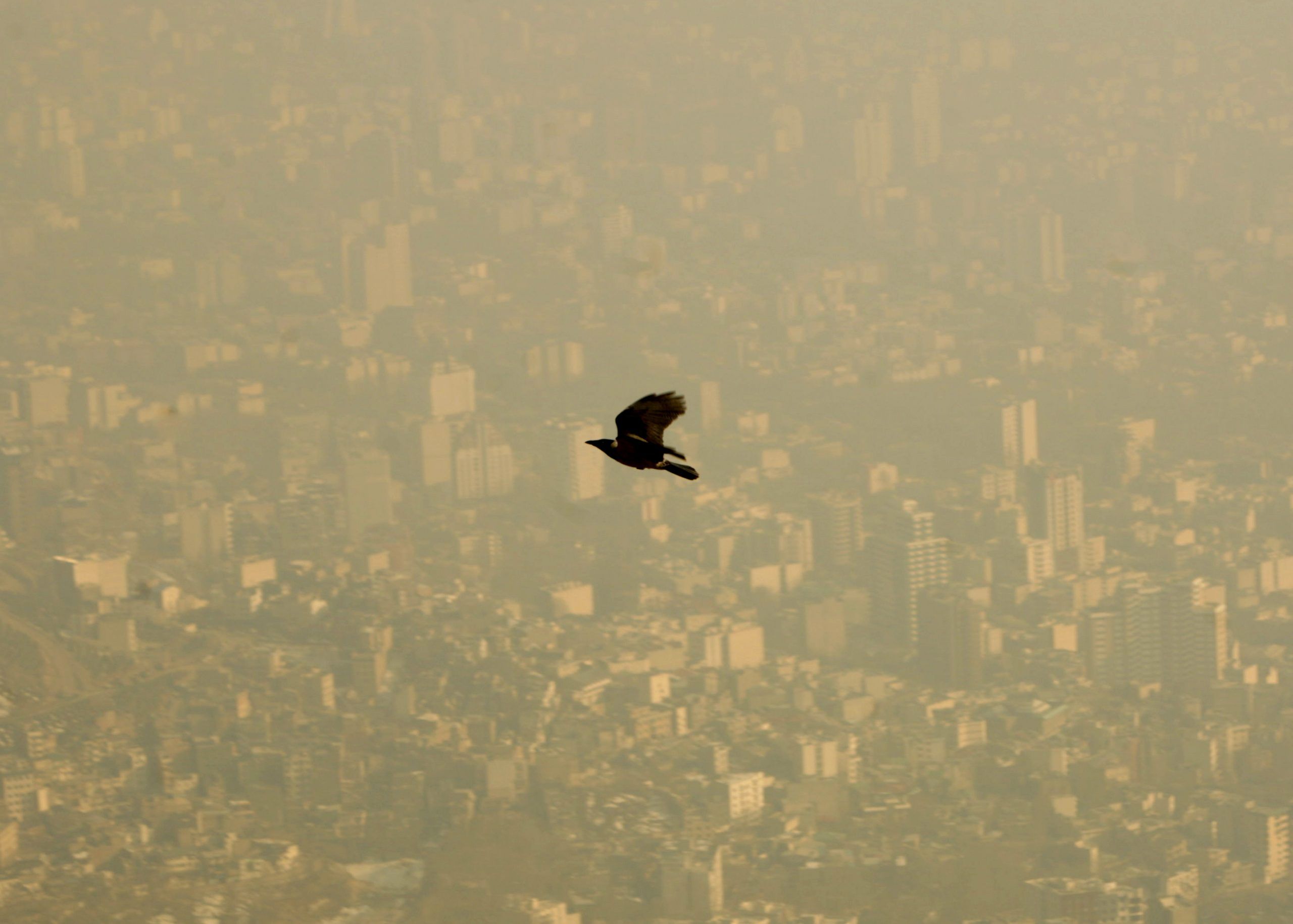By Kayhan Life Staff
The World Health Organization (WHO) Air Quality Guidelines have lowered the annual average of fine particulate matter (PM) for the concentration of Ambient (outdoor) air pollution from 10 μg/m3 (micrograms, or one-millionth of a gram per cubic meter air) to 5 μg/m3 in 2021.
Air pollution causes some 40,000 premature deaths in Iran every year. It can pose severe health problems, even in amounts that fall below the ambient level. The WHO will publish its annual air quality guidelines this summer.
Air pollution from oil-fired power plants in Iran is three times the Air Quality Index and six times the WHO’s air quality guidelines.
A recent report by the Center for Air Pollution Research (CAPR) at the Tehran University of Medical Sciences has shown that the average annual concentration of outdoor air pollution in Iran stood at PM2.5, which is almost “three times the existing World Air Quality Standards” and “six times the WHO’s new guidelines,” according to the CAPR director, Mohammad Sadegh Hassanvand.
Mr. Hassanvand noted that the WHO’s air quality guidelines differ in some respects from the world’s air quality standards. While the guidelines are recommendations, each country must adhere to a set of standards, Hassanvand explained.
“The last guidelines that the organization developed for air pollution were in 2005. A new study on air pollution and its impact on humans has been published now,” Hassanvand, who recently took part in a webinar to review the WHO’s recommendations, said. “Given the latest finding on air pollution, the WHO’s European office in Bonn, Germany, established a specialized working group to update its air quality guidelines in 2016.”
“The WHO will publish the guidelines this summer,” Hassanvand explained. “The working group’s findings will show that the current standards cannot guarantee people’s health.”
“For instance, our national standard for the average annual PM2.5 equals 12 μg/m3. The WHO’s 2005 guidelines set the level at 10 μg/m3,” Hassanvand said. “However, recent research has shown that even the accepted standard posed a serious health threat. As a result, the WHO recently lowered the standard value from 10 μg/m3 to 5 μg/m3.”
“Unfortunately, we do not have a scientific and logical approach to developing air quality standards in Iran,” Hassanvand said. “All countries review their air quality standards every few years to reduce their pollution level.”
[aesop_image img=”https://kayhanlife.com/wp-content/uploads/2021/05/2007-01-25T120000Z_27542087_GM1DULTLGSAA_RTRMADP_3_IRAN-scaled.jpg” panorama=”off” credit=”FILE PHOTO: Mountain summits are seen through the polluted sky in north of Tehran. REUTERS./” align=”center” lightbox=”off” captionsrc=”custom” captionposition=”left” revealfx=”off” overlay_revealfx=”off”]
Air quality standards for various pollutants are adjusted every few years. For instance, if the value of a pollutant was 50 μg/m3 in 2000, it dropped to 40 μg/m3 in 2010 and is still lower in 2020. The declining trend for average values is a fundamental principle for implementing measures to reduce air pollutants and maintain and promote public health.
“We are arguably the only country that has not reduced its national air quality standards for various pollutants in the past decade,” Hassanvand noted. “Our failure to tackle air pollution has raised those numbers.”
According to Hassanvand, Iranian officials thought the WHO’s guidelines were too “stringent” in 2013 and “incompatible with the situation in the country,” and, therefore, they increased the air pollution standards arbitrarily. They increased the average daily value of PM2.5 from 25 μg/m3 to 35 μg/m3 and for PM10 from 50 μg/m3 to 150 μg/m3.
Hassanvand noted that the primary reason for increasing standards, which lacked any scientific basis, was to downplay the severity of air pollution in the country.
“So far, air quality standards in the country have been based solely on the principle of copying and pasting the guidelines by the WHO and the U.S. Environmental Protection Agency, and others,” he said.
Hassanvand called for a coherent, comprehensive, and workable program to tackle air pollution, given its impact on public health and the country’s economy. He also noted a significant increase in using fuel oil by various industries in Tehran and other big cities in 2020 compared to the previous year. Authorities first denied the report, but then admitted to the alarming rise in fuel oil consumption.
“We carried out a study of sulfur dioxide (SO2), an air pollutant, at several monitoring stations in Tehran and other cities, which showed SO2 concentration level had increased significantly during the peak hours in 2020 compared to 2019,” Hassanvand explained. “However, we do not have reliable information on which industries use fuel oil or fuels that produce a high amount of SO2.”
“The average concentration of SO2 increased in Tehran in 2020 compared to 2018 and 2019,” Hassanvand said. “The increase has not been very high in terms of annual average, but there have been significant incidents of SO2 concentration level increasing during peak hours.”
“SO2 increases the risk of respiratory diseases such as asthma and the frequency of asthma attacks. Long-term exposure to it reduces lung capacity in children and impairs the respiratory system,” Hassanvand Explained.
SO2 and other gaseous pollutants, including nitrogen oxides (NO2), ammonia, and volatile organic compounds, release secondary particles into the atmosphere and are harmful to humans.
“Secondary particles are detrimental to the human body. Studies have shown that the simultaneous increase in SO2 level and volume of suspended particles in air intensifies their devastating effects,” Hassanvand added.






